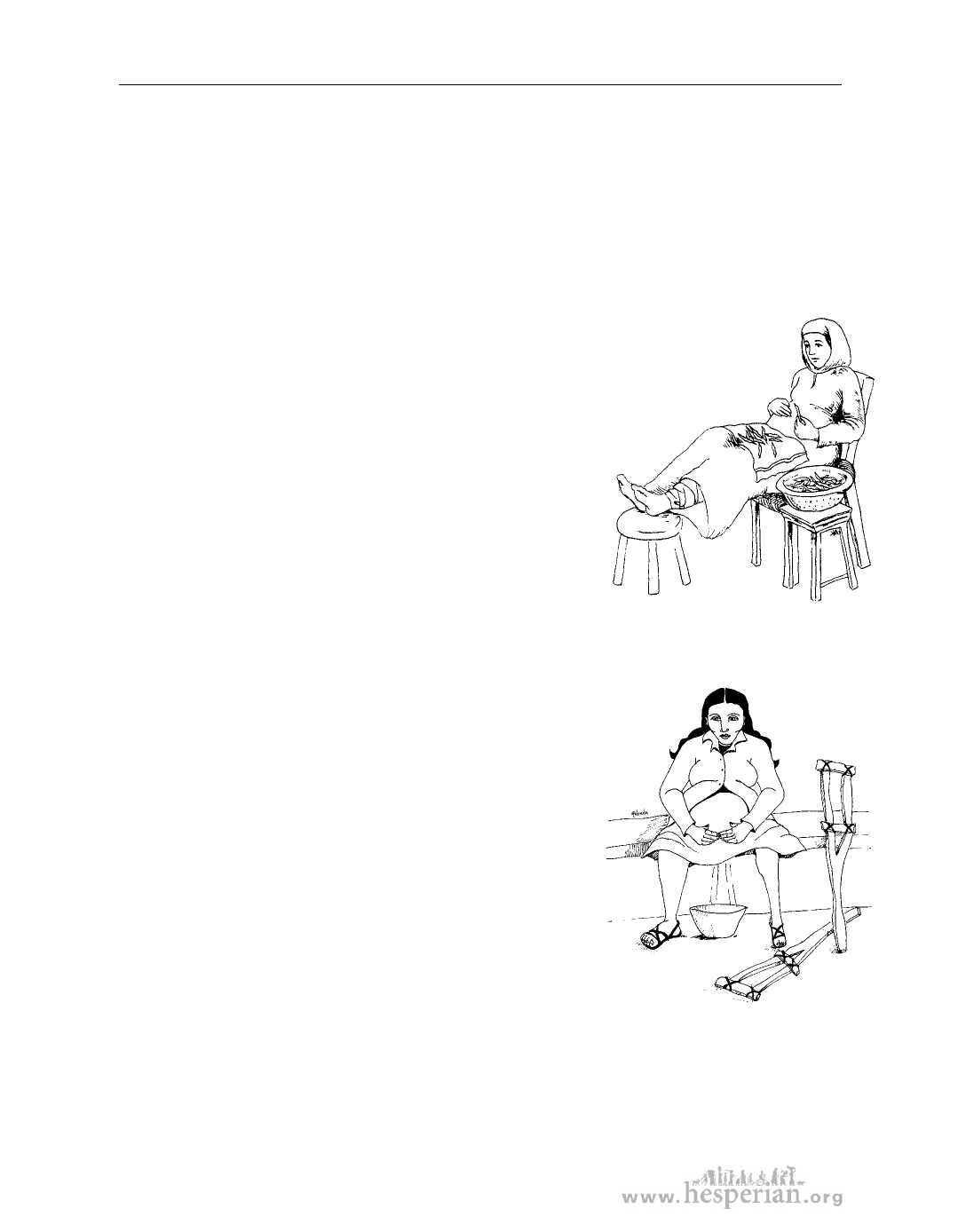
230 chapter 10: Pregnancy
Piles (Hemorrhoids)
Hemorrhoids are swollen veins in and around the anus. They often itch, burn or
bleed, and they can be very painful. Hemorrhoids sometimes look like large ‘blood
blisters.’ Straining to pass stool when you are constipated makes them worse. Many
women, both disabled and non-disabled, get hemorrhoids while they are pregnant.
Sitting for a long time seems to make them worse.
What to do:
• Follow the advice for preventing constipation on page 108.
• To help shrink the hemorrhoids, soak some clean cloth in
a drying (astringent) plant juice, such as witch hazel or
cactus, and put it on the painful area.
• Use a cushion when sitting to reduce pressure.
• Try to move at least once every hour.
• If you lie down all the time, try to lie on your side,
and have someone help you change position
regularly.
• Sit or lean back with your feet and legs up. This
will help your blood circulate better and heal the
hemorrhoid more quickly.
Common health problems
Bladder infections
During pregnancy, all women are more likely to get
a bladder infection than at other times. As the womb
grows larger, it presses against the bladder and may
prevent all the urine from coming out. Germs can
grow in the remaining urine and cause an infection.
Women with disabilities, such as limited muscle
control, and paralysis or loss of feeling in the lower
body, tend to have more problems than other women
with leaking urine and infections of the bladder and
kidneys. Bladder problems are a common cause of
dysreflexia (see pages 117 to 119).
If you usually push on your belly to
make urine come out, it is still OK to
do this while you are pregnant. You
will not harm the baby.
A Health Handbook for Women with Disabilities 2007